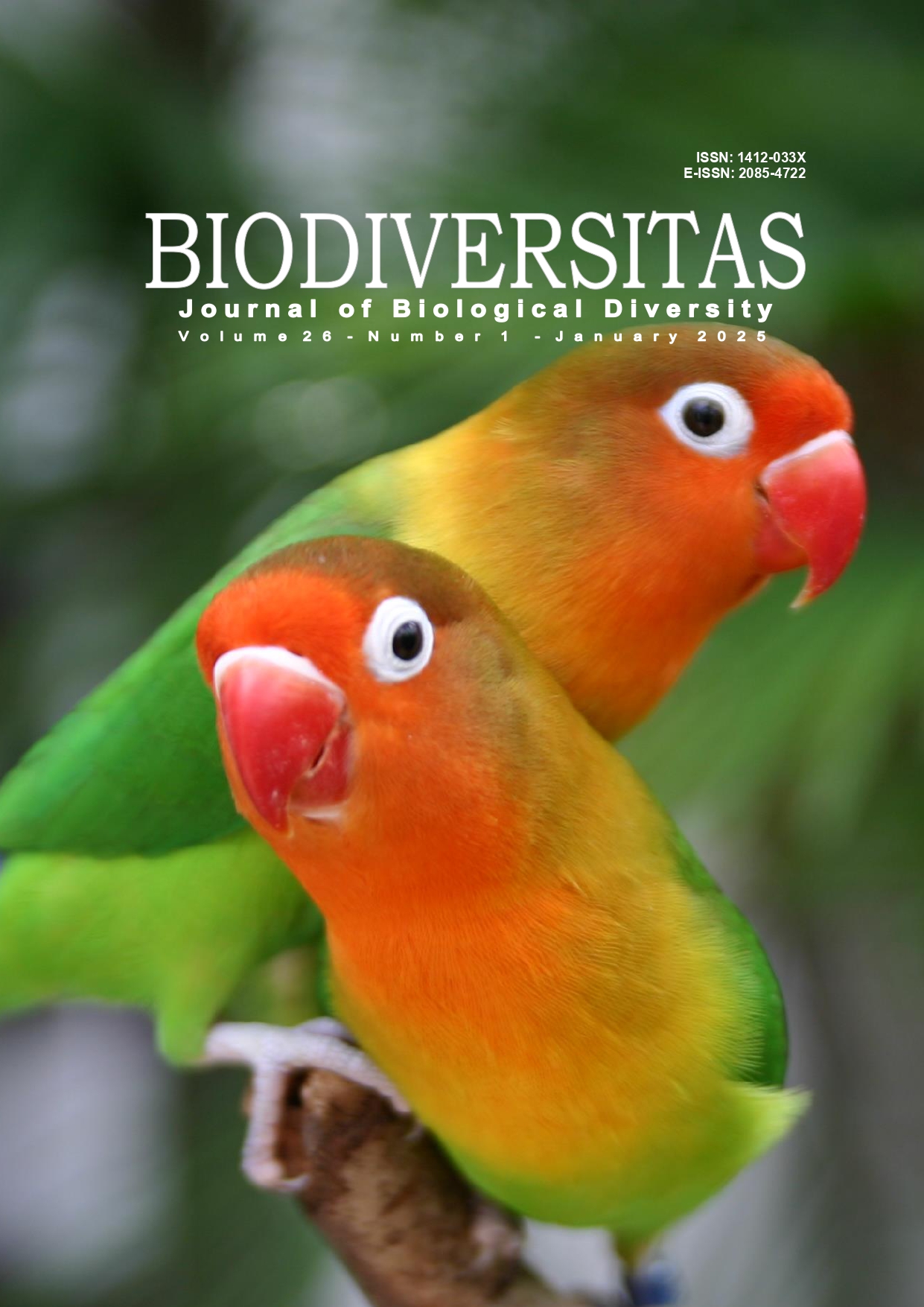eDNA metabarcoding in mangrove ecosystems for fish conservation and stock assessment of Sardinops sagax melanostictus in the Philippines
##plugins.themes.bootstrap3.article.main##
Abstract
Abstract. Balatero TP, Molina Z, Dalayap RM, Dechavez R, Manubag JJ, Sumaya NH, Peña JD, Tabugo SRM. 2025. eDNA metabarcoding in mangrove ecosystems for fish conservation and stock assessment of Sardinops sagax melanostictus in the Philippines. Biodiversitas 26: 347-357. Mangrove forests are essential ecosystems that provide many benefits, including nursery grounds for various marine species; however, identifying juveniles is often challenging, as visual fish surveys primarily rely on the characteristics of adult specimens for accurate classification. These vital ecosystems are threatened by overfishing, habitat destruction, pollution, and climate change. Therefore, this study employs environmental DNA (eDNA) metabarcoding as a non-invasive tool to identify fish species in the mangrove ecosystems of Mindanao, Philippines. eDNA metabarcoding facilitates species detection by analyzing genetic material found in environmental samples, offering a cost-effective and sensitive method for identifying fish species. Seawater samples were collected from selected mangrove areas, and the extracted eDNA was analyzed using high-throughput next-generation sequencing (NGS). The sampling sites were South Cotabato, Surigao del Norte, Misamis Oriental, and Tawi-Tawi, which recorded 29 species across 20 families. Notable species included Zenarchopterus dunckeri (Zenarchopteridae), a rare fish in the aquarium hobby; Hippocampus comes (Syngnathidae), the tiger-tail seahorse, which is classified as Vulnerable by the IUCN; Sardinops melanostictus (Clupeidae), known for its high commercial value; Siganus corallinus (Siganidae), valued for both food and the aquarium trade; and Gymnothorax flavimarginatus (Muraenidae), an invasive species, that plays a vital role in the food chain as a natural predator of lionfish. Tawi-Tawi Island emerged as the most diverse site, recording species from 11 families. The results highlight the critical role of mangroves as nurseries in supporting diverse fish populations and underscore the effectiveness of eDNA metabarcoding as complementary to traditional species inventory techniques.
##plugins.themes.bootstrap3.article.details##
Most read articles by the same author(s)
- NITCEL AYMIE ALBARIDO, SHARON ROSE TABUGO, High-throughput analysis using 16S rRNA gene of bacterial communities present in selected bivalves and gastropods species from Bayug Island, Iligan City, Philippines , Biodiversitas Journal of Biological Diversity: Vol. 25 No. 1 (2024)
- CHENCY GRACE O. LIGUEZ, SHARON ROSE TABUGO, Antibacterial activity of sea hare (Dolabella auricularia) egg string extracts against potentially pathogenic bacteria , Biodiversitas Journal of Biological Diversity: Vol. 24 No. 12 (2023)
- RANDE DECHAVEZ, MA. LYN CALUB, DONA ROSE GENOBATA, RAUL BALACUIT, REIZL JOSE, SHARON ROSE TABUGO, Identification of culture-dependent microbes from mangroves reveals dominance of Bacillus including medically important species based on DNA signature , Biodiversitas Journal of Biological Diversity: Vol. 23 No. 10 (2022)
- JOHN ARLU BAUTISTA, JANECE JEAN MANUBAG, NANETTE HOPE SUMAYA, JOEY GENEVIEVE MARTINEZ, SHARON ROSE TABUGO, Environmental DNA (eDNA) metabarcoding and fish visual census reveals the first record of Doboatherina magnidentata in the Philippines , Biodiversitas Journal of Biological Diversity: Vol. 24 No. 5 (2023)
- MARY GRACE EREGUERO, MARY ANNE CORDERO, RODELYN DALAYAP, SHARON ROSE TABUGO, Antifungal activity of selected sea cucumber species from Tukuran, Zamboanga del Sur, Mindanao, Philippines using modified SPOTi assay , Biodiversitas Journal of Biological Diversity: Vol. 23 No. 11 (2022)
- DARSHEL ESTER P. ESTOR, SHARON ROSE TABUGO, High-throughput sequencing of Diatoms using V4 region of 18S rRNA gene in Bayug Island, Iligan City, Philippines , Biodiversitas Journal of Biological Diversity: Vol. 24 No. 11 (2023)
- LOEL DALAN, VERONICA TAÑAN, MICHELLE ANNE DIANO, CESAR DEMAYO, MYLAH TABELIN, NANETTE HOPE SUMAYA, Life history traits of the gastropod-associated bacterivorous nematode Caenorhabditis brenneri (Nematoda: Rhabditida) , Biodiversitas Journal of Biological Diversity: Vol. 25 No. 7 (2024)


 https://orcid.org/0000-0001-6813-840X
https://orcid.org/0000-0001-6813-840X